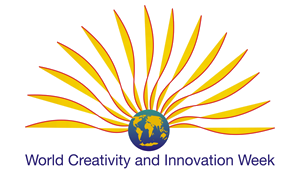Facilitator or catalyst? Is there a difference when it comes to creativity and innovation?
I learned a facilitator is a ‘guide by the side, not a sage on the stage’ from my college professor and mentor the late Dr. Ruth B. Noller. We didn’t use the word catalyst to describe what we did at the International Center for Studies in Creativity in the 1970′s and ’80′s – no. Facilitator provided the mission of our role: to make things easier for people to use their imagination, create new ideas and muster courage to make new decisions. In those days our job was to be invisible, to guide others’ creative process.
Yesterday I had a call from Elizabeth Huggins a Strategist, Innovation Catalyst and Trainer with Marketing Innovation Change Unlimited and one of the prime movers behind World Creativity and Innovation Week April 15 – 21 in its early years. We talked about whether there is a difference between creativity and innovation facilitators and catalysts. To her, there definitely are unique aspects to each. She gave permission to blog her thoughts, I find them intriguing.
Clients choose to work with creativity and innovation facilitators and trainers, Elizabeth says, based on matching needs based on these four factors:
- The process they use (e.g. creative problem solving, synectics, design thinking, 6 hat thinking, etc.)
- Their experience (e.g. the kinds of clients with whom they’ve worked – education, finance, industry, non-profit, public, marketing, etc - and the kind of work they’ve done – ideation, training, innovation, etc.)
- Their personality/tone or manner (e.g. their personality style, how they interact, rapport)
- The thinking strategies they use (e.g. some are better at helping clients make things better; others excel at boosting clients to make things different.)
Facilitators guide the process and do not get involved with the clients subject. They neither approve or disapprove of ideas or decisions, nor do they recommend courses of action to take. They develop, design and deliver process, stimulation, idea capture, creative thinking methods, report writing and if asked, may give an overview and analysis. Prior to a group meeting they help the client focus on the real issue to be approached and move on from there. Innovation and creativity catalysts do the same and more.
Clients choose Innovation and/or creativity catalysts to add content and drive. As well as leading meetings as above, catalysts give new ideas and directions from their best thinking in support of the client’s business or goals. They accelerate and stretch thinking and make unexpected connections while driving the process to move things along. And, Elizabeth says, there’s more. What she does for clients is synthesizes data and insights and presents new never thought of before directions and suggestions, i.e. tips, for the client to use that would really make a difference in their business, it’s in her nature.
Facilitator’s, she says, don’t do that. They may inject new territory into the data collection stage to expand the scope of beginning thinking for projects and they likely don’t write reports that include consumer insights, short list of hot ideas, a synthesis of these in the larger context, and other significant extrapolations beyond perceived barriers. Elizabeth cannot not be prolific in ideas or strategic in approach and that’s what she brings to her clients table.
In our field of creativity/innovation professionals, so few agree on the same differentiators or definitions of terms. How many definitions of creativity there are depends on how many people engage in the conversation. The funny thing about it is, everyone is absolutely right. (what a field!)
Discussion Questions: Are creativity and innovation facilitators different from creativity and innovation catalysts? Which would you be likely to hire? What are your expectations of retaining the services of a creativity and/or innovation professional overall, hm? If you could predict which is more valuable to organizations in the long run – using the definitions included here – which would you say has longer lasting power: the facilitator or the catalyst, and why?
About Elizabeth Huggins


RT @julist24: Facilitator or Catalyst? Interesting blog post from @marcisegal: http://t.co/BMtIXJX2
catalyst or facilitator of #creativity and #innovation? Is there a difference? What is the diff? Join the discussion http://t.co/Mna3lYv4
[...] Facilitator or catalyst? Is there a difference when it comes to creativity and innovation? (creativityland.ca) [...]